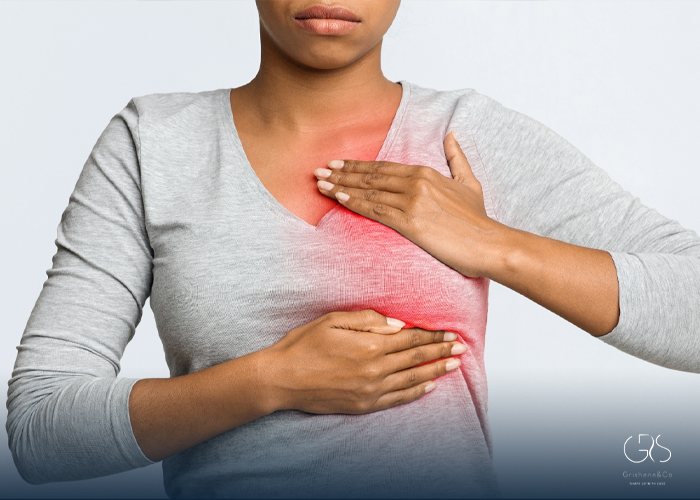Experiencing burning breast pain can be alarming, as it raises concerns about potential underlying health conditions. This discomfort, commonly known as mastalgia or stinging breast pain, can occur due to a variety of reasons, ranging from benign to potentially serious conditions. Understanding the causes, symptoms, risk factors, diagnosis, treatment, and when to seek medical attention for burning breast pain is crucial to address this distressing symptom effectively.
Is Burning Sensation in the Breast Normal?
While occasional mild breast pain can be normal, severe or persistent burning sensation in the breast should be evaluated by a healthcare provider to identify potential underlying factors contributing to the discomfort.

Symptoms of Mastalgia
In addition to a burning sensation, mastalgia can manifest as breast tenderness, swelling, heaviness, changes in breast texture, or pain radiating to the armpits or upper back, which can affect individuals in diverse ways.
Types of Breast Pain (Mastalgia)
Mastalgia can be classified into two main types: Cyclical Mastalgia and Non-cyclical Mastalgia.
Possible Causes of a Burning Sensation in the Breast
Breast Infection: A burning sensation in the breast can be indicative of a breast infection, medically known as mastitis, which is common among breastfeeding women.
Nerve Impingement: A compressed or irritated nerve in the breast or surrounding areas can lead to thoracic outlet syndrome or intercostal neuralgia and cause a burning sensation.
Breast Cancer: In rare cases, breast cancer may cause pain or discomfort that may manifest as a burning sensation.
(To learn more about Triple Negative Breast Cancer please refer to this article)
Skin Conditions: Skin conditions like dermatitis, eczema, or shingles can cause inflammation, itching, and pain, which may manifest as a burning feeling.
Other Causes: Other potential causes include chest wall muscle strain, hormonal fluctuations, certain medications, or even psychological factors like anxiety or stress.
Risk Factors and Diagnosis
Certain risk factors, such as age, hormonal fluctuations, history of breast surgery, smoking, and high caffeine intake, can predispose individuals to mastalgia. Diagnosis may involve a comprehensive clinical assessment, imaging studies, and fluid analysis to determine the best course of action for management.

Treatment Options and Managing Breast Pain
Treatment for a burning sensation in the breast varies based on the underlying cause and severity of symptoms. Techniques such as self-care measures, dietary modifications, over-the-counter pain relief medications, prescription medications, and targeted treatments for specific conditions like infection or inflammation may be recommended to alleviate discomfort and improve quality of life.
When to Seek Medical Attention
Individuals should seek medical attention if the burning sensation in the breast is severe, persistent, or accompanied by alarming symptoms such as visible breast changes, discharge, lumps, or fever. Consulting a healthcare provider for a thorough evaluation and tailored management plan is crucial.
Conclusion
A burning sensation in the breast can have various causes, ranging from benign to potentially serious conditions. By understanding the symptoms, types, possible causes, risk factors, and treatment options regarding mastalgia, individuals can navigate their breast health more effectively and address any concerns promptly.
Sources
- American Cancer Society, Breast Cancer Signs & Symptoms
- Mayo Clinic, Shingles







